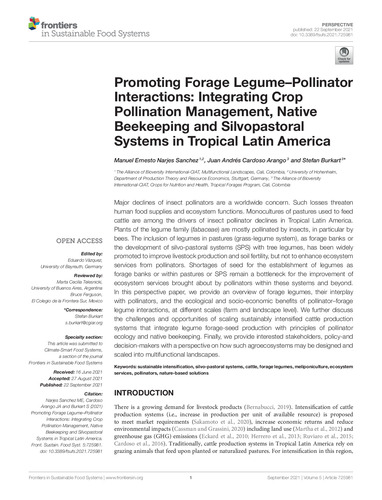Promoting forage legume–pollinator interactions: Integrating crop pollination management, native beekeeping and silvopastoral systems in tropical Latin America
Abstract
Major declines of insect pollinators are a worldwide concern. Such losses threaten human food supplies and ecosystem functions. Monocultures of pastures used to feed cattle are among the drivers of insect pollinator declines in Tropical Latin America. Plants of the legume family (fabaceae) are mostly pollinated by insects, in particular by bees. The inclusion of legumes in pastures (grass-legume system), as forage banks or the development of silvo-pastoral systems (SPS) with tree legumes, has been widely promoted to improve livestock production and soil fertility, but not to enhance ecosystem services from pollinators. Shortages of seed for the establishment of legumes as forage banks or within pastures or SPS remain a bottleneck for the improvement of ecosystem services brought about by pollinators within these systems and beyond. In this perspective paper, we provide an overview of forage legumes, their interplay with pollinators, and the ecological and socio-economic benefits of pollinator–forage legume interactions, at different scales (farm and landscape level). We further discuss the challenges and opportunities of scaling sustainably intensified cattle production systems that integrate legume forage-seed production with principles of pollinator ecology and native beekeeping. Finally, we provide interested stakeholders, policy-and decision-makers with a perspective on how such agroecosystems may be designed and scaled into multifunctional landscapes.

